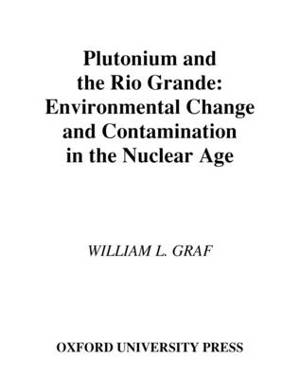
- Afhalen na 1 uur in een winkel met voorraad
- Gratis thuislevering in België vanaf € 30
- Ruim aanbod met 7 miljoen producten
- Afhalen na 1 uur in een winkel met voorraad
- Gratis thuislevering in België vanaf € 30
- Ruim aanbod met 7 miljoen producten
Zoeken
Plutonium and the Rio Grande
Environmental Change and Contamination in the Nuclear Age
William L Graf
Hardcover | Engels
€ 491,95
+ 983 punten
Omschrijving
The first atomic bombs were constructed at the Los Alamos National Laboratory, where lab workers disposed of waste plutonium in nearby canyons leading to the Rio Grande. Today, the environmental consequences are just beginning to be understood as scientists examine the effects created by past mishandling of one of the most toxic chemical wastes known. Written in an engaging, accessible style, Plutonium and the Rio Grande is the first book to offer a complete exploration of this environmental history. It includes an explanation of what plutonium is, how much of it was released by the Los Alamos workers, and how much entered the river system directly from waste disposal and indirectly, as a result of atomic bomb fallout. The book includes extensive appendices, maps, diagrams, and photographs. Environmental managers, ecologists, hydrologists and other river specialists, as well as concerned general readers will find the book readable and informative.
Specificaties
Betrokkenen
- Auteur(s):
- Uitgeverij:
Inhoud
- Aantal bladzijden:
- 356
- Taal:
- Engels
Eigenschappen
- Productcode (EAN):
- 9780195089332
- Verschijningsdatum:
- 29/12/1994
- Uitvoering:
- Hardcover
- Formaat:
- Genaaid
- Afmetingen:
- 160 mm x 234 mm
- Gewicht:
- 680 g

Alleen bij Standaard Boekhandel
+ 983 punten op je klantenkaart van Standaard Boekhandel
Beoordelingen
We publiceren alleen reviews die voldoen aan de voorwaarden voor reviews. Bekijk onze voorwaarden voor reviews.








